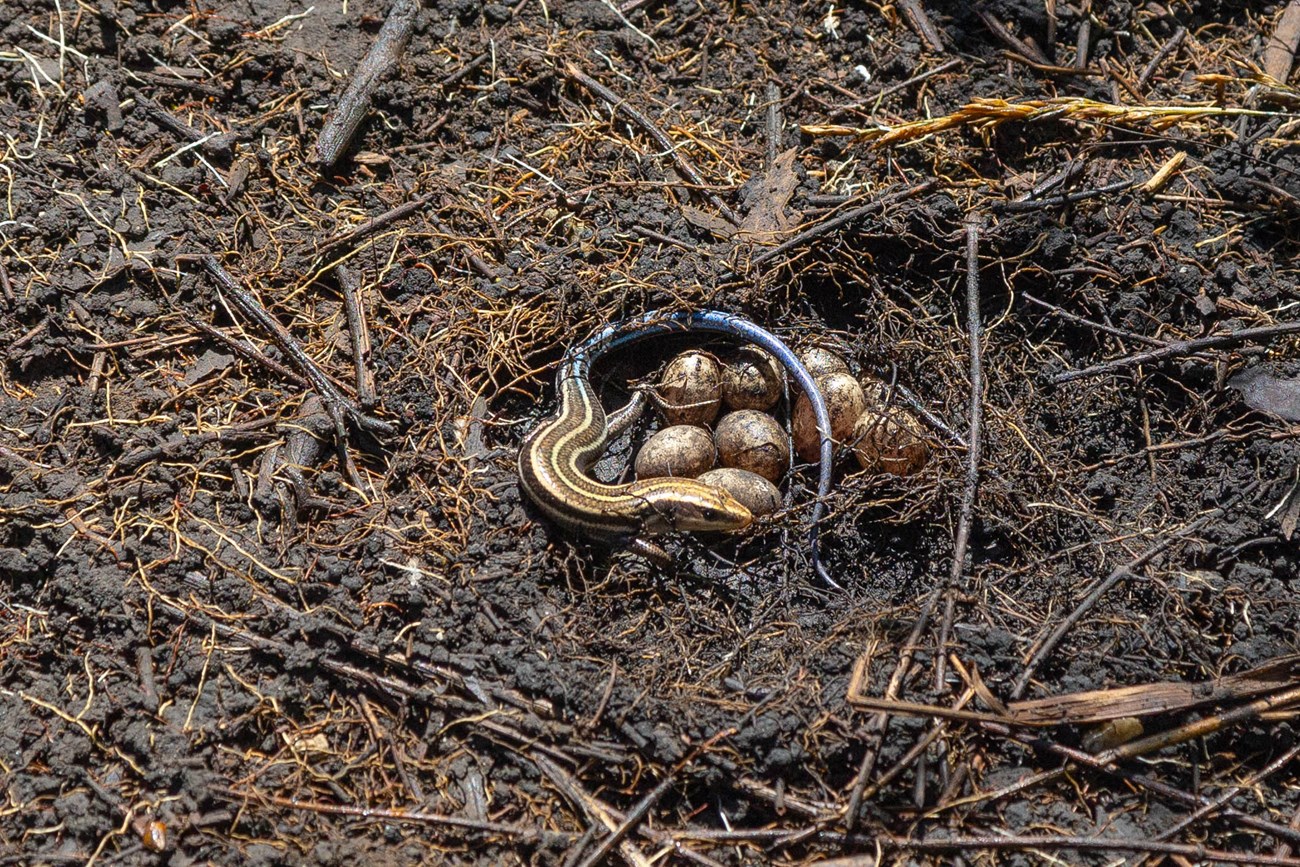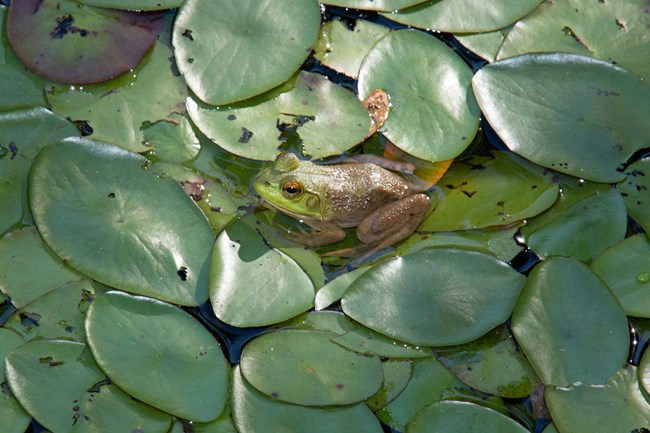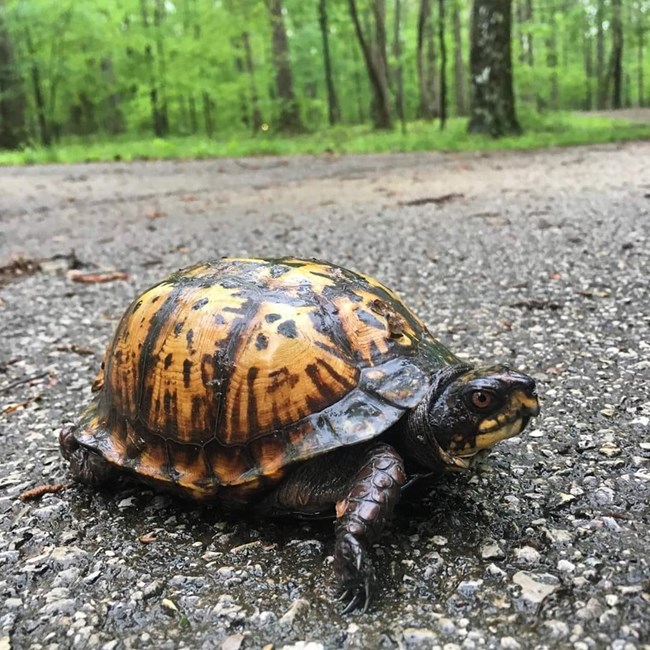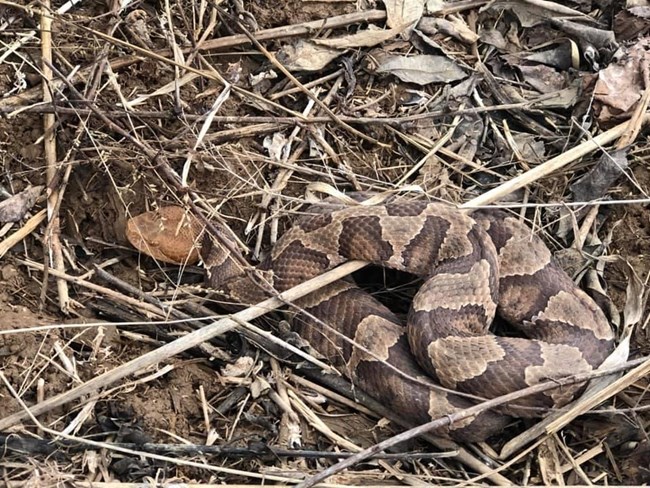
NPS Photo Diverse habitats and ecosystems contribute to the abundance of reptile and amphibian species found within the park boundary. Amphibians such as frogs, toads, salamanders, and newts, need a wet environment in order to survive, and rely on their thin skin to breathe and absorb water. Reptiles, like snakes, lizards, and turtles, with their hard-shelled or leathery eggs can live in drier habitats and locations further from water. Both reptiles and amphibians are cold blooded - requiring the sun’s heat to warm themselves. In many habitats, multiple species of both reptiles and amphibians can be found alongside one another. 
NPS Photo/ Deb Spillman Ecosystem IndicatorsThe herpetofauna (amphibians and reptiles) of Mammoth Cave National Park play important roles in the health of the ecosystems; every species is both predator and prey to other organisms within the larger food web. 
NPS Photo/ Sara DeMaria Interesting Species Found in the ParkEastern box turtle Terrapene carolina carolinaThese commonly seen turtles can be identified by their bold orange and black pattern. The eastern box turtle has a distinctive hinged lower shell, allowing them to completely enclose itself. The box turtle eats a wide variety of plants and animals and is primarily terrestrial. They are most often seen in the park crossing trails and roadways, making them very vulnerable to vehicle collision. American bullfrog Lithobates catesbeianusOften simply called a bullfrog, these amphibians get their name from the males’ bellowing during breeding season. All frogs and toads native to the park breed and lay their eggs in water, Sloans Pond is a common place to hear an American bullfrog. Salamanders, toads, and frogs have mucus covering their skin which helps them absorb oxygen. With a moderate climate, warm and moist conditions, year-round storms, and frequent flooding, this area is an excellent place for them to live. Cave salamanders Eurycea lucifugaEntrances to the underground labyrinth of Mammoth Cave create an environment where the slender orange bodies of cave salamanders cling to the rocky walls. Sometimes known as the spotted-tail salamander, these trogloxenes can also be found near surface water sources or under moist rocks or logs. 
NPS Photo/ Moria Painter Venomous SnakesThe eastern copperhead Agkistrodon contortrix and Crotalus horridus, the timber rattlesnake Crotalus horridus, both prefer to stay hidden and out of sight from predators and humans alike. However, occasionally these snakes are seen along trails, in campgrounds and crossing roadways. The eastern copperhead can be identified by the dark marks that look like “Hersey’s Kisses” down the side of its body while the timber rattlesnake’s identity can be revealed by the presence of specialized scales forming a rattle on the end of its tail. Both snakes rely on their camouflage to avoid detection by predators and prey, only revealing themselves once someone or something gets too close. Snakes go into brumation (a condition of very slow metabolism) during the winter months, finding refuge from the cold in crevices and leaf piles. |
Last updated: November 10, 2021
